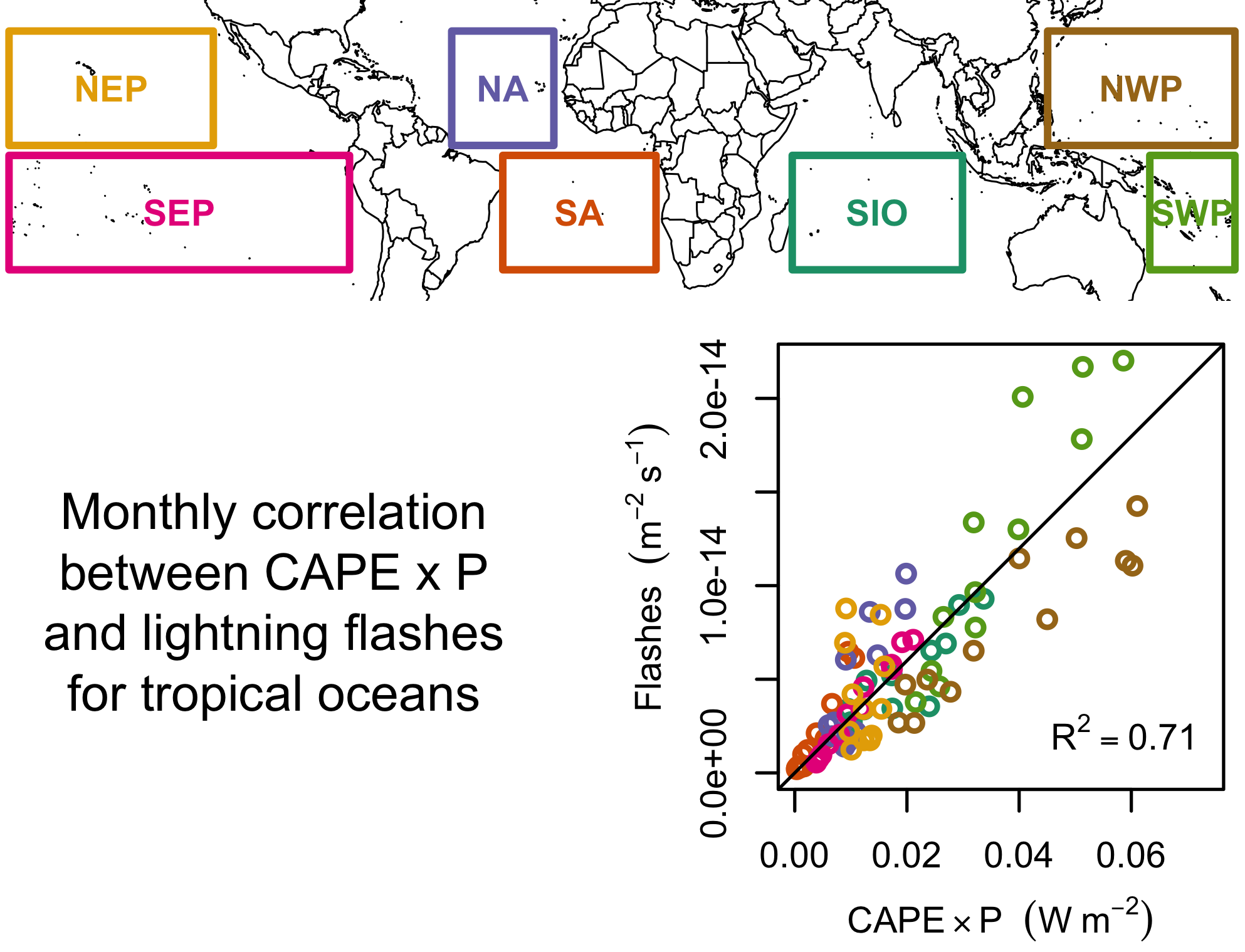Romps, Evaluating the future of lightning in cloud-resolving models, GRL, 2019
Paper
Description
What effect will global warming have on lightning rates? To answer this question, we rely on lightning proxies — functions of atmospheric conditions that correlate with lightning — and look at how those proxies change in global climate models. One such proxy is the product of CAPE (a measure of potential storm energy) and the precipitation rate P. When applied to global climate models, CAPExP predicts a large increase in lightning over both the continental U.S. and the tropical oceans. But, a different proxy, based on the lofting of ice by updrafts, predicts a small increase over the U.S. and a decrease over the tropical oceans. Which is correct?
To date, these proxies have been studied only in global climate models (GCMs) with parameterized convection. Here, cloud-resolving simulations are used to assess their predictions of future lightning rates. Over the U.S., all proxies predict a large increase in the lightning rate in the range of 8-16%/K. On the other hand, in the tropics as modeled by radiative-convective equilibrium, half of the proxies predict an increase (of 5-12%/K) while the other half predict a decrease (of 1-4%/K). The reasons for the different responses of these proxies is explored, but it remains unclear which proxy is best suited to predicting future lightning rates.
Monthly climatology of observed flash rate per area versus the monthly climatology of reanalysis CAPExP for each of seven ocean basins (the seven colors in the scatterplot). The scatterplot has 7 x 12 = 84 points corresponding to a monthly climatology for each of the seven ocean basins.
